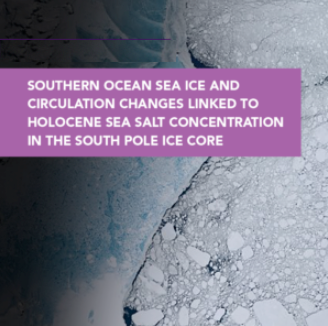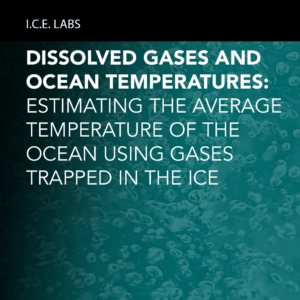Article Abstract
Variability in sea ice is a critical climate feedback, yet the seasonal behavior of Southern Hemisphere sea ice and climate across multiple timescales remains unclear. Here, we develop a seasonally-resolved Holocene sea salt record using major ion measurements of the South Pole Ice Core (SPC14). We combine the SPC14 data with the GEOS-Chem chemical transport model to demonstrate that the primary sea salt source switches seasonally from open water (summer) to sea ice (winter), with wintertime variations disproportionately responsible for the centennial to millennial scale structure in the record. We interpret increasing SPC14 and circum-Antarctic Holocene sea salt concentrations, particularly between 8-10 ka, as reflecting a period of winter sea ice expansion. Between 5-6 ka, an anomalous drop in South Atlantic sector sea salt indicates a temporary sea ice reduction that may be coupled with Northern Hemisphere cooling and associated ocean circulation changes.
What we know: During winters, the oceans near Antarctica get so cold that they freeze over, forming sea ice. This happens every year, but the amount of ocean that freezes changes from year to year and from century to century.
Why it’s important: Changes in sea ice near Antarctica are important because sea ice affects the movement of air and water as well as the overall amount of energy absorbed by the Earth.
How the research was done: In this project, we used a mile-long ice core from the South Pole to help us understand past changes in Antarctic sea ice. We found that salty snow from sea ice blows onto the South Pole and is buried beneath the snow. This has happened for thousands of years, so we can use the amount of salt in our ice core from the South Pole to show us how sea ice changed in the past.
What the evidence shows: We found that, overall, there is more sea ice surrounding Antarctica in recent times than there was 10,000 years ago. We also found one time, between 5,000-6,000 years ago, when there was very little sea ice. Studying this time might help us understand what is happening today.




